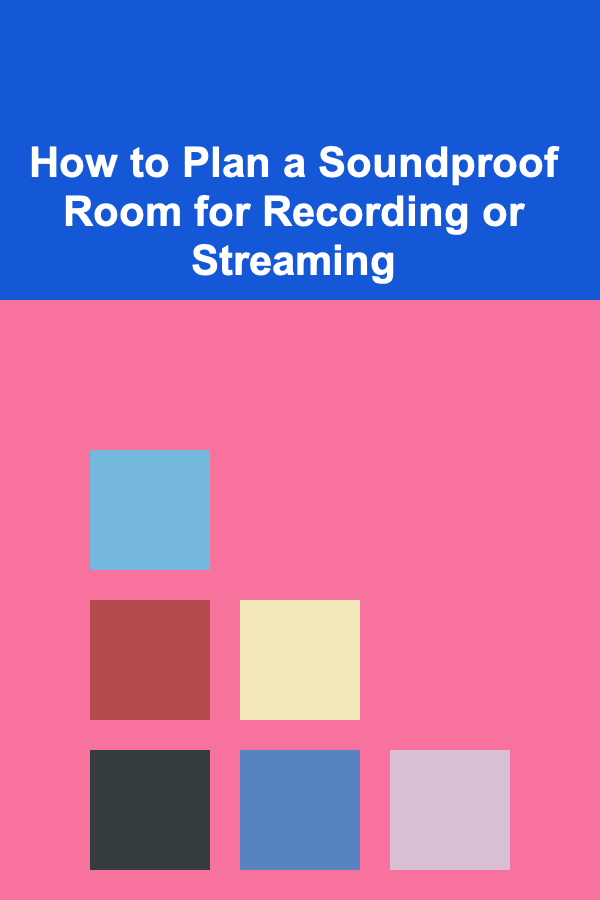
Beginner Guide: The Essentials of Content Creation
ebook include PDF & Audio bundle (Micro Guide)
$12.99$9.99
Limited Time Offer! Order within the next:

In the digital age, content creation has become an essential skill for individuals, businesses, and brands. Whether you're starting a blog, launching a YouTube channel, or creating social media posts, content creation is the backbone of online presence. But where do you begin? How do you create content that resonates with your audience and drives engagement? This beginner's guide will walk you through the essentials of content creation, offering actionable tips, best practices, and strategies to help you get started.
Understand Your Audience
The first step in creating compelling content is understanding your audience. Your content will only resonate if it speaks directly to the people you are trying to reach. To create meaningful content, you need to know who they are, what they like, and what challenges they face.
Identify Your Target Audience
Before creating any content, ask yourself:
- Who are my ideal readers, viewers, or listeners?
- What are their interests, problems, and needs?
- What motivates them to engage with content?
- What language or tone would resonate best with them?
Create Audience Personas
Audience personas are fictional representations of your ideal audience members. These personas help you visualize your audience and understand their motivations better. To create a persona, include the following details:
- Demographics (age, gender, location)
- Interests and hobbies
- Job role and responsibilities
- Common pain points or challenges
- Goals and aspirations
Understanding these elements will guide your content creation and ensure it aligns with the needs of your audience.
Choose Your Content Type
Content can take many forms, and it's crucial to select the right type for your audience and objectives. Below are some popular content formats and their purposes:
Blog Posts
Blog posts are versatile and great for written content. They allow you to provide in-depth information, educate your audience, and improve SEO rankings. A blog post is ideal if you want to share long-form content like guides, reviews, and tutorials.
Best For: Providing value through detailed, informational content.
Videos
Video is one of the most powerful forms of content. It can convey information more quickly and is highly engaging. Whether you're creating short-form social videos, tutorials, or in-depth documentaries, video content can reach a broad audience.
Best For: Storytelling, demonstrations, and building a connection with your audience.
Social Media Posts
Social media platforms like Instagram, Twitter, and LinkedIn allow you to share bite-sized content that is easy to digest and share. These platforms work best for quick, engaging content such as memes, infographics, polls, or promotional posts.
Best For: Building brand awareness, engaging with followers, and sharing short updates.
Podcasts
Podcasts are audio-based content that lets you communicate ideas in a conversational manner. Podcasts are ideal for long-form discussions, interviews, or storytelling and can be consumed while your audience is on the go.
Best For: Sharing in-depth discussions, interviews, and niche topics.
Infographics
Infographics are a great way to present complex information in an easy-to-digest format. They combine visuals and text to explain data, concepts, or processes.
Best For: Visual learners and simplifying complex information.
Choosing the right content format is essential for meeting your audience's needs. Consider your target audience and the platform they frequent before selecting the type of content you create.
Create Engaging Content
Now that you've chosen your content type, it's time to focus on creating engaging and valuable content. Here's how you can do that:
Focus on Value
One of the most important aspects of content creation is offering value. Your audience should walk away feeling like they've gained something---whether it's information, entertainment, or inspiration. Ask yourself, "What does my audience need, and how can I help them?"
- Solve a problem.
- Educate your audience on a new concept or skill.
- Entertain or provide emotional engagement.
- Inspire action or thought.
Tell a Story
Humans are wired to respond to stories. Incorporating storytelling into your content makes it more relatable and memorable. Instead of just providing facts or data, tell a story that connects with your audience's emotions.
- Use personal anecdotes or customer stories.
- Create a narrative around the content you're presenting.
- Use compelling hooks to draw the audience in.
Be Authentic
Authenticity is key in content creation. Whether you're writing a blog post or filming a video, your audience will connect better with content that feels genuine. Share your true thoughts, experiences, and insights. Avoid sounding too "corporate" or overly polished---people are drawn to realness.
Use Visuals
Humans are visual creatures, and content that includes visuals (images, videos, or graphics) tends to perform better. High-quality visuals can help break up text, explain complex ideas, and make your content more shareable.
- Include relevant images, charts, and videos.
- Use clean, consistent branding (colors, fonts, logos).
- Make sure your visuals are high-quality and properly optimized.
Keep It Simple
In an age of information overload, simplicity can help your content stand out. Avoid overcomplicating things and keep your content clear and concise. Use short paragraphs, bullet points, and subheadings to break up the text and make it easy to digest.
Optimize for Search (SEO)
If you want your content to be found, it's important to optimize it for search engines. SEO (Search Engine Optimization) involves tweaking your content to rank higher on search engines like Google, ensuring it reaches a wider audience.
Keyword Research
Before creating content, conduct keyword research to find out what your target audience is searching for. Tools like Google Keyword Planner , SEMrush , and Ahrefs can help you discover keywords that have high search volume and low competition. Use these keywords strategically in your titles, headers, and body content.
Optimize Meta Tags
Meta tags, such as your page title and meta description, play a crucial role in SEO. These elements help search engines understand the content of your page and encourage people to click on your links in search results.
- Craft compelling titles and meta descriptions that include target keywords.
- Keep titles concise and relevant (60 characters or less).
- Use action-oriented language in descriptions to entice clicks.
Internal and External Links
Linking to other relevant content (internal linking) and reputable external sources (external linking) helps improve SEO. Internal links help search engines understand the structure of your website, while external links can increase the credibility of your content.
- Link to previous blog posts, videos, or other resources on your site.
- Include authoritative sources to back up your claims.
Mobile Optimization
More people are consuming content on their mobile devices than ever before. Ensure your content is mobile-friendly, with easy-to-read fonts, fast loading times, and responsive design.
Consistency Is Key
Content creation isn't just about creating one piece of content and calling it a day. To build a loyal audience and gain traction, you need to be consistent.
Create a Content Calendar
A content calendar helps you plan your content in advance, ensuring that you publish regularly. Consistency in publishing builds trust with your audience and improves your SEO performance. A calendar also helps you track key dates, trends, and seasonal content opportunities.
Stick to a Schedule
Decide on a publishing schedule that works for you. Whether you post once a week, bi-weekly, or monthly, make sure to stick to it. Regular posting keeps your audience engaged and coming back for more.
Repurpose Content
Don't be afraid to repurpose content across different platforms. A single blog post can be turned into an Instagram story, a YouTube video, or a podcast episode. Repurposing content allows you to reach new audiences and get more mileage from the work you've already done.
Analyze and Improve
Once you start publishing content, it's essential to measure its performance. Analytics help you understand what's working, what's not, and where you can improve.
Track Key Metrics
Use tools like Google Analytics , YouTube Analytics , or Instagram Insights to track the following:
- Page views or video views
- Engagement rate (likes, comments, shares)
- Bounce rate (how long visitors stay on your content)
- Conversion rates (sign-ups, purchases, etc.)
Learn from Feedback
Your audience's feedback---whether through comments, surveys, or direct messages---can offer valuable insights into what content resonates best. Pay attention to their preferences and tailor future content accordingly.
Continuously Improve
Content creation is an ongoing process. Based on the feedback and analytics, continue to refine your content. Experiment with different formats, topics, and strategies to see what works best for your audience.
Conclusion
Content creation is an essential skill in today's digital world, and with the right approach, anyone can become a successful creator. By understanding your audience, choosing the right content type, optimizing for search, and staying consistent, you can produce content that not only attracts attention but also drives meaningful engagement. Remember, content creation is a journey, so stay flexible, keep learning, and most importantly, have fun with it!

How to Create a Custom Closet System for Kids
Read More
How to Cut Unnecessary Expenses Without Sacrificing Happiness
Read More
How to Keep Your Home Allergen-Free and Dust-Free
Read More
How to Plan a Soundproof Room for Recording or Streaming
Read More
How to Practice Zazen Meditation
Read More
How to Renovate Your Home for Better Natural Lighting
Read MoreOther Products

How to Create a Custom Closet System for Kids
Read More
How to Cut Unnecessary Expenses Without Sacrificing Happiness
Read More
How to Keep Your Home Allergen-Free and Dust-Free
Read More
How to Plan a Soundproof Room for Recording or Streaming
Read More
How to Practice Zazen Meditation
Read More